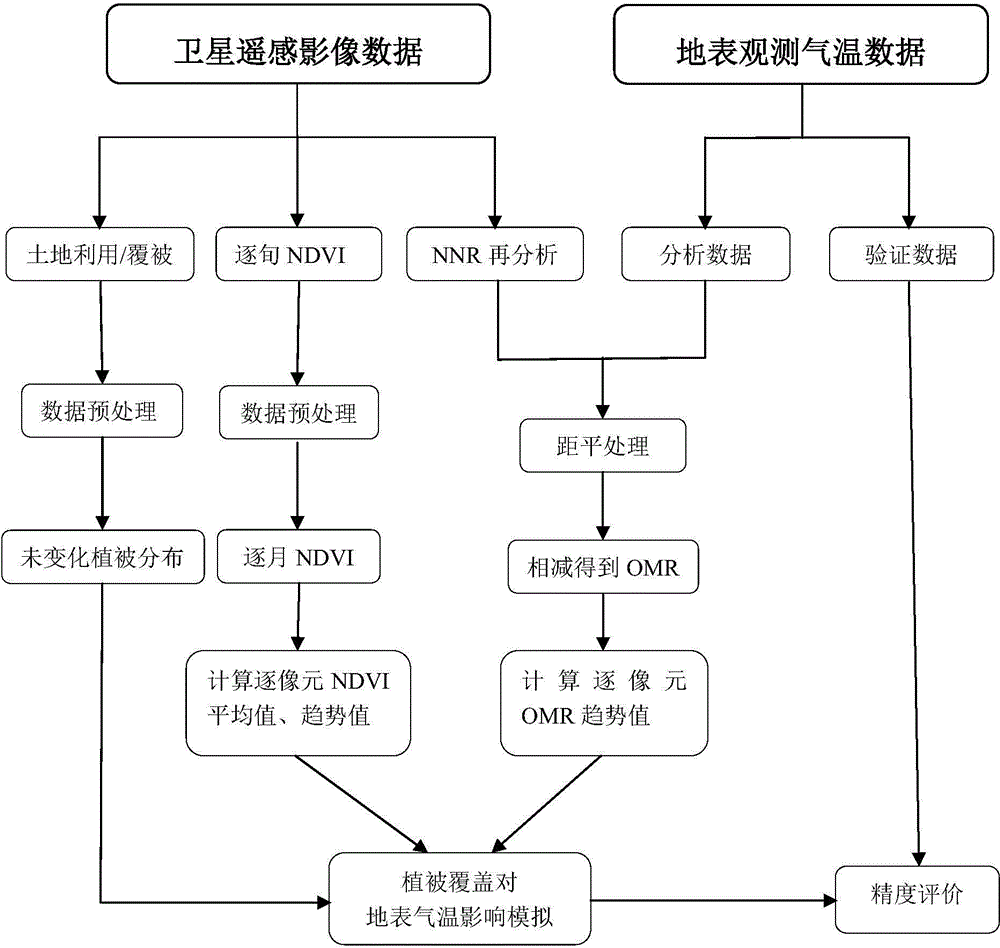Remote-sensing-based method for estimating influences of area vegetation cover on earth surface air temperature
A technology of vegetation cover and air temperature, which is used in computing, special data processing applications, instruments, etc.
- Summary
- Abstract
- Description
- Claims
- Application Information
AI Technical Summary
Problems solved by technology
Method used
Image
Examples
specific Embodiment approach 1
[0023] Specific implementation mode one: a method for estimating the impact of regional vegetation coverage on surface air temperature based on remote sensing in this embodiment is implemented in the following steps:
[0024] Step 1. Obtain the normalized difference vegetation index NDVI data set covering the study area, the NNR reanalysis air temperature data set, the surface observation air temperature grid point data set, and the land use / cover data of the start and end years of the research period, and perform data preprocessing ;
[0025] Step 2. According to the two periods of land use / cover data in the beginning and end years of the research period, extract the distribution of a certain vegetation type that has not undergone land use change during the research period;
[0026] Step 3: Remove the NNR and then analyze the annual average of the air temperature data set and the surface observation air temperature grid point data set in the entire research period, so as to r...
specific Embodiment approach 2
[0032] Specific implementation mode two: the difference between this implementation mode and specific implementation mode one is: said step one: the data preprocessing process is:
[0033] Step 1: Perform projection transformation on the four data sets and unify them under the same coordinate system and projection;
[0034] Step 12: Synthesize the ten-day NDVI data into the monthly NDVI value by using the maximum value synthesis method.
[0035] Other steps and parameters are the same as those in Embodiment 1.
specific Embodiment approach 3
[0036] Specific embodiment three: the difference between this embodiment and specific embodiment one or two is that: said step six: the calculation and publicity of the change trend value of NDVI by pixel and the trend value of OMR temperature change by pixel is as follows:
[0037] SLOPE NDVI = n * Σ i = 1 n i * NDVI i - ( Σ i = 1 n i ) ( Σ i = ...
PUM
 Login to View More
Login to View More Abstract
Description
Claims
Application Information
 Login to View More
Login to View More - R&D
- Intellectual Property
- Life Sciences
- Materials
- Tech Scout
- Unparalleled Data Quality
- Higher Quality Content
- 60% Fewer Hallucinations
Browse by: Latest US Patents, China's latest patents, Technical Efficacy Thesaurus, Application Domain, Technology Topic, Popular Technical Reports.
© 2025 PatSnap. All rights reserved.Legal|Privacy policy|Modern Slavery Act Transparency Statement|Sitemap|About US| Contact US: help@patsnap.com



